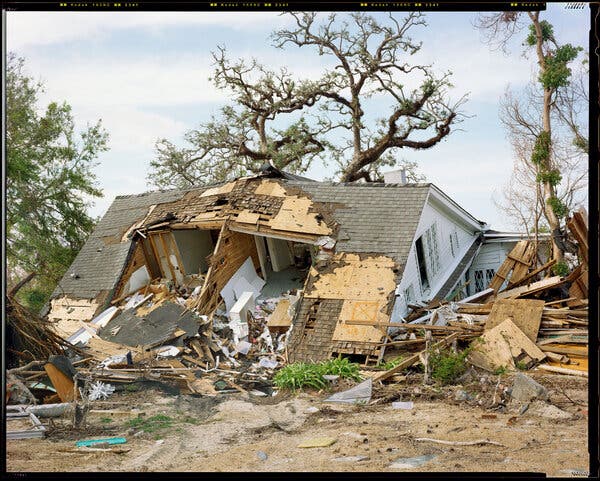When Hurricane Katrina made landfall two decades ago near Buras, Louisiana, Richard Misrach was far away, documenting the desert landscapes around California’s Salton Sea with his wife, Myriam. As he captured vast dunes and cracked lakebeds for his Desert Cantos series, news of the devastation unfolding 1,500 miles away deeply unsettled him. Putting the desert on hold, the couple packed their large-format camera equipment and headed east along Interstate 10.
Upon arriving, Misrach encountered a city that resembled a post-apocalyptic film set. Streets were littered with nails and shards of glass, and their Volkswagen camper suffered two flat tires amid the debris. The air was heavy with the stench of stagnant waste and mold. Many victims were still missing, and the scope of destruction was overwhelming. The couple found lodging at a hospital wing designated for cancer patients’ families. Food was scarce, forcing them to rely on a care package sent by Misrach’s father containing nuts and yogurt. Myriam soon left the area.
Using a press pass to bypass National Guard checkpoints, Misrach was among the few civilians granted freedom to explore the ravaged city. He carried his heavy, Victorian-era accordion-style view camera alongside a small digital camera—the first he had ever used, gifted by his gallery representative. Most of his work was done in solitude.
He explained, “If people had been present, I would have photographed them.” But with most residents displaced—to Houston, Shreveport, Atlanta, or confined in hazardous evacuation centers—or missing and deceased, he turned his lens to the remnants left behind: demolished homes, emptied swimming pools, a broken mannequin, and cars scattered haphazardly as if tossed by a child’s tantrum—overturned, piled, and strewn across rooftops, sidewalks, and doorways. This wreckage was the aftermath of a calamity rooted not only in the storm’s fury but also in a century of misguided and neglectful decisions, as highlighted by historians.


0 Comments
No comments yet. Be the first to comment!